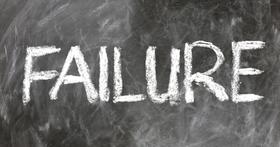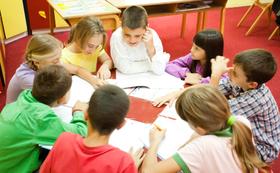Rose School ranks in the bottom 50% of all schools in Oregon for overall test scores (math proficiency is bottom 50%, and reading proficiency is bottom 50%).
The percentage of students achieving proficiency in math was 21-39% (which was lower than the Oregon state average of 40%). The percentage of students achieving proficiency in reading/language arts was 21-39% (which was lower than the Oregon state average of 54%).
School Overview
School Type
Grades Offered
Grades 9-12
(Supplemental Virtual)
(Supplemental Virtual)
Total Students (20-21)
38 students
Total Classroom Teachers (20-21)
5 teachers
School Rankings
Math Test Scores (% Proficient)
(18-19)21-39%
40%
Reading/Language Arts Test Scores (% Proficient)
(18-19)21-39%
54%
Student-Teacher Ratio
n/a
17:1
American Indian
(20-21)n/a
1%
Asian
(20-21)n/a
4%
Hispanic
(20-21)19%
25%
Black
(20-21)n/a
2%
White
(20-21)76%
60%
Hawaiian
(20-21)n/a
1%
Two or more races
(20-21)5%
7%
Graduation Rate
(21-22)<50%
81%
School Statewide Testing
School District Name
Source: National Center for Education Statistics (NCES), OR Dept. of Education
Frequently Asked Questions
What percent of students have achieved state testing proficiency in math and reading?
21-39% of students have achieved math proficiency (compared to the 40% OR state average), while 21-39% of students have achieved reading proficiency (compared to the 54% OR state average).
What is the graduation rate of Rose School?
The graduation rate of Rose School is 50%, which is lower than the Oregon state average of 81%.
How many students attend Rose School?
38 students attend Rose School.
What is the racial composition of the student body?
76% of Rose School students are White, 19% of students are Hispanic, and 5% of students are Two or more races.
What grades does Rose School offer ?
Rose School offers enrollment in grades 9-12 (Supplemental Virtual).
What school district is Rose School part of?
Rose School is part of Douglas County School District 4.
Recent Articles

Public School Open House & Enrollment Season Guide
A parent-focused guide to the public school open house and enrollment season, with expert questions, timelines, and decision tips.

School Supply Budget 2026: Fees, Books, Tech Costs
School Supply Budget 2026 guide for parents, covering fees, textbooks, technology, and hidden extras to plan ahead.

Education Funding in America (2025 Update)
Comprehensive 2025 update on public school funding in America, new federal and state policies, per-pupil spending, and equity challenges.





